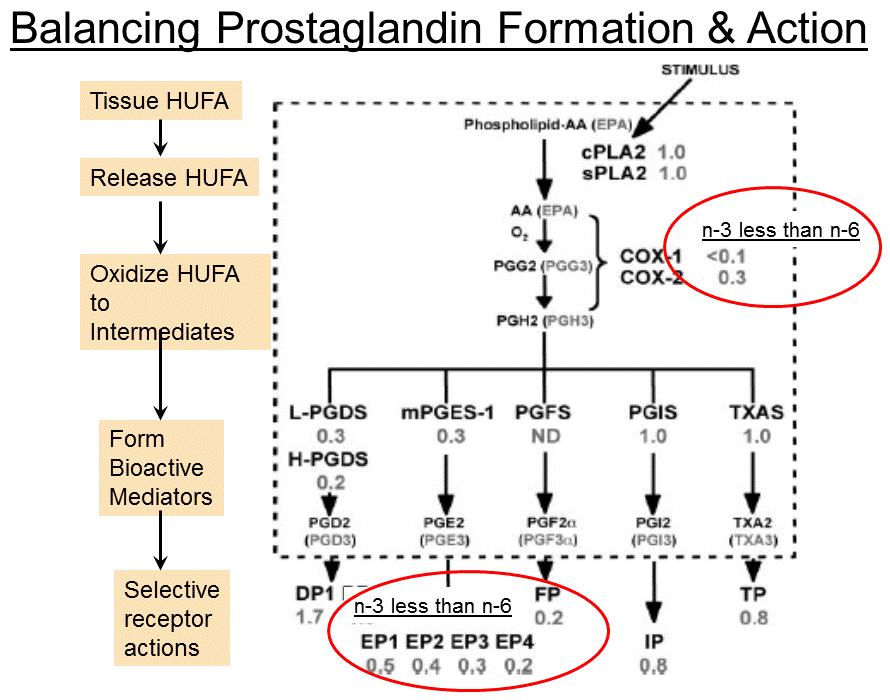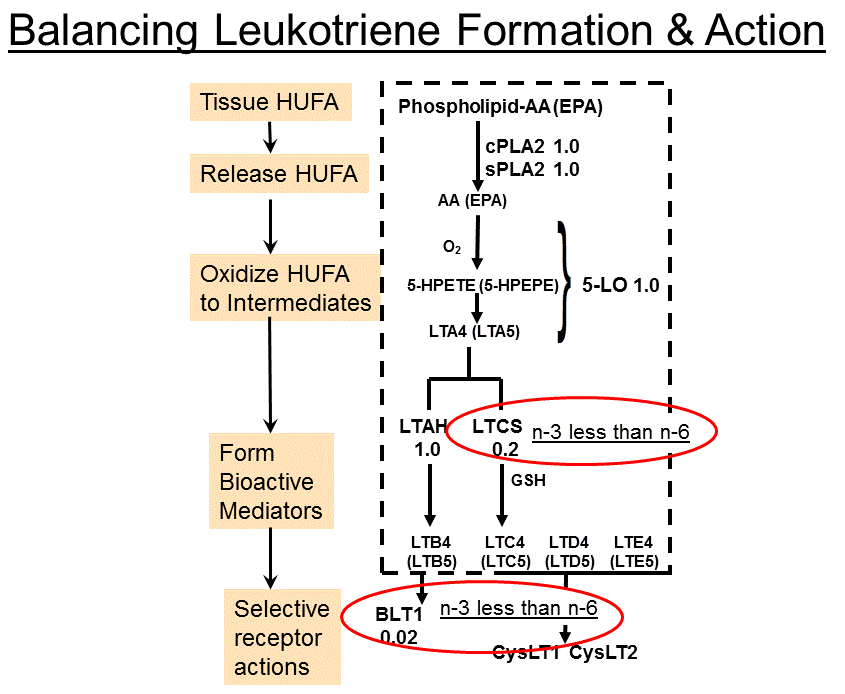Hormone-like Eicosanoids
 Omega-3 and omega-6 HUFA are released from tissue phospholipids, and they form eicosanoids. The n-3 and n-6 compete during this conversion The resulting hormone-like mediators compete for action at specific receptors found in nearly every tissue of the body. Actions tend to be less vigorous for omega-3 than the omega-6 acids. This is shown by the numbers next to the enzymes and receptors noted in the figures.
Omega-3 and omega-6 HUFA are released from tissue phospholipids, and they form eicosanoids. The n-3 and n-6 compete during this conversion The resulting hormone-like mediators compete for action at specific receptors found in nearly every tissue of the body. Actions tend to be less vigorous for omega-3 than the omega-6 acids. This is shown by the numbers next to the enzymes and receptors noted in the figures.
Higher proportions of omega-6 in HUFA tissues – – and stronger actions of the hormone-like eicosanoids can shift tissue conditions from healthy physiology to pathophysiology. Omega-3 HUFA act more slowly than omega-6 HUFA with the COX enzymes, making prostaglandins with less harmful outcomes. Also, the EP4 and FP receptors act less vigorously with omega-3 prostaglandins, giving more moderate outcomes.
 Leukotrienes act in many different tissues to mediate normal physiology. The slower formaton of the omega-3 LTC5 compared to LTC4 by the LTC synthase (LTCS) moderates events in asthma and bronchopulmonary disorders. Also, weaker BLT receptor action with the omega-3 LTB5 compared to LTB4 moderates many immune-inflammatory events. This is especially important in early events of atherogenesis in cardiovascular disease.
Leukotrienes act in many different tissues to mediate normal physiology. The slower formaton of the omega-3 LTC5 compared to LTC4 by the LTC synthase (LTCS) moderates events in asthma and bronchopulmonary disorders. Also, weaker BLT receptor action with the omega-3 LTB5 compared to LTB4 moderates many immune-inflammatory events. This is especially important in early events of atherogenesis in cardiovascular disease.
Excessive omega-6 eicosanoid actions occur during thrombosis and arrhythmia of heart attacks and inflammatory/immune processes of atherosclerosis, arthritis, asthma, and tumor development as well as behavior disorders of depression and suicide. Thrombosis in heart attacks is caused by too much action of omega-6 mediators in blood platelets. As the % omega-6 in HUFA ranges from 25% to 85%, the associated mortality rates for coronary heart disease (CHD) range from 20 to 200 per 100,000 people.
